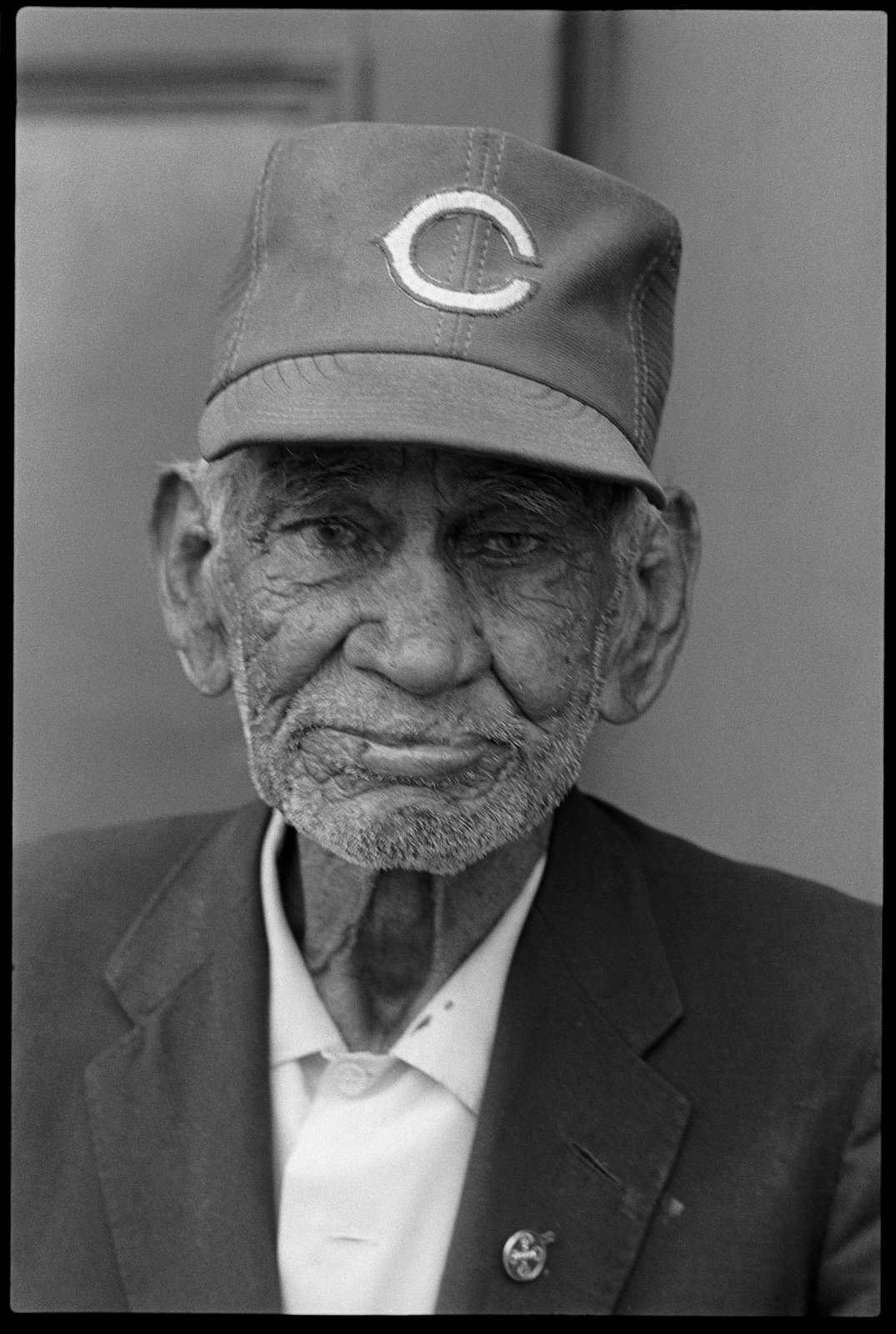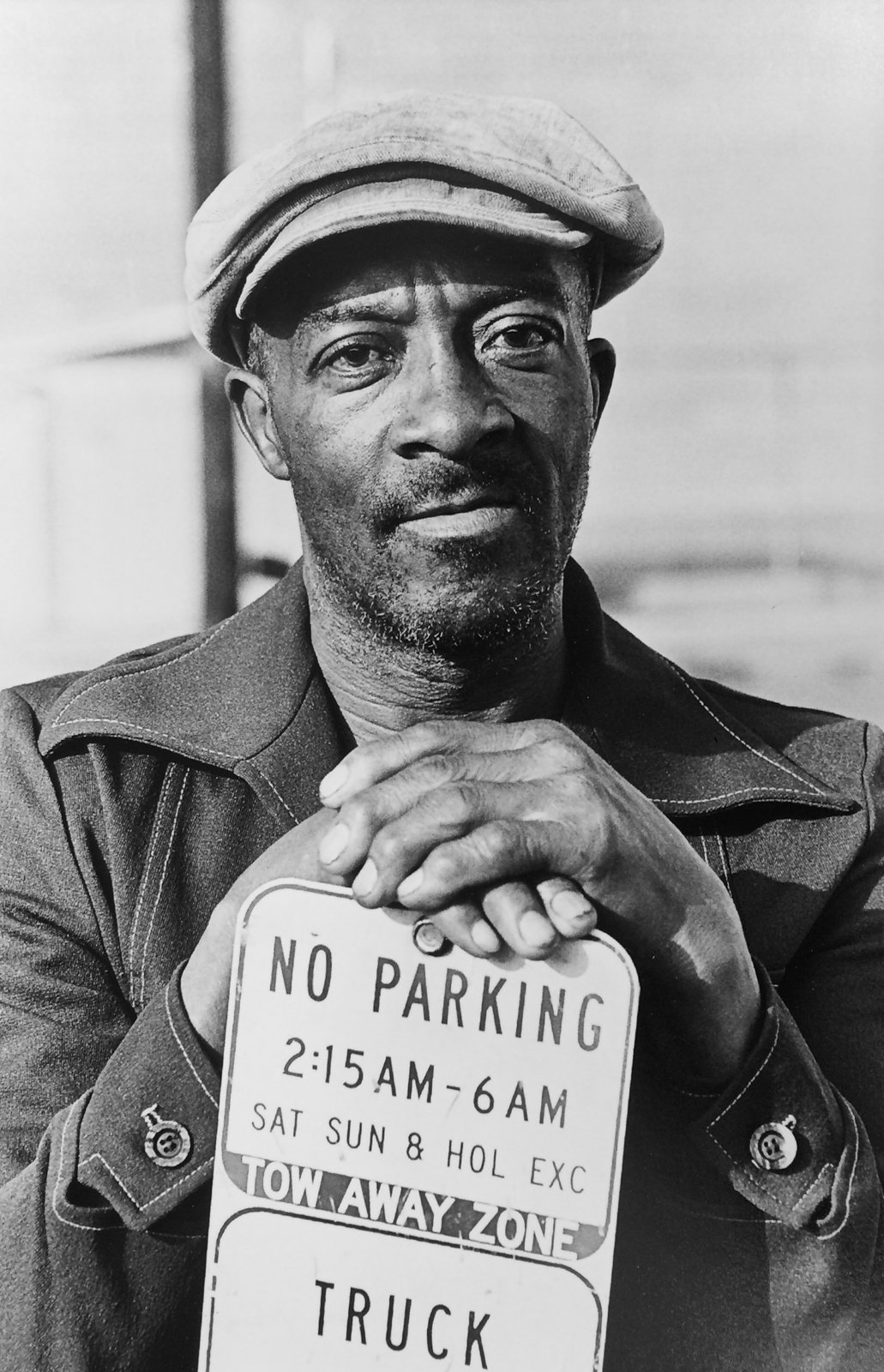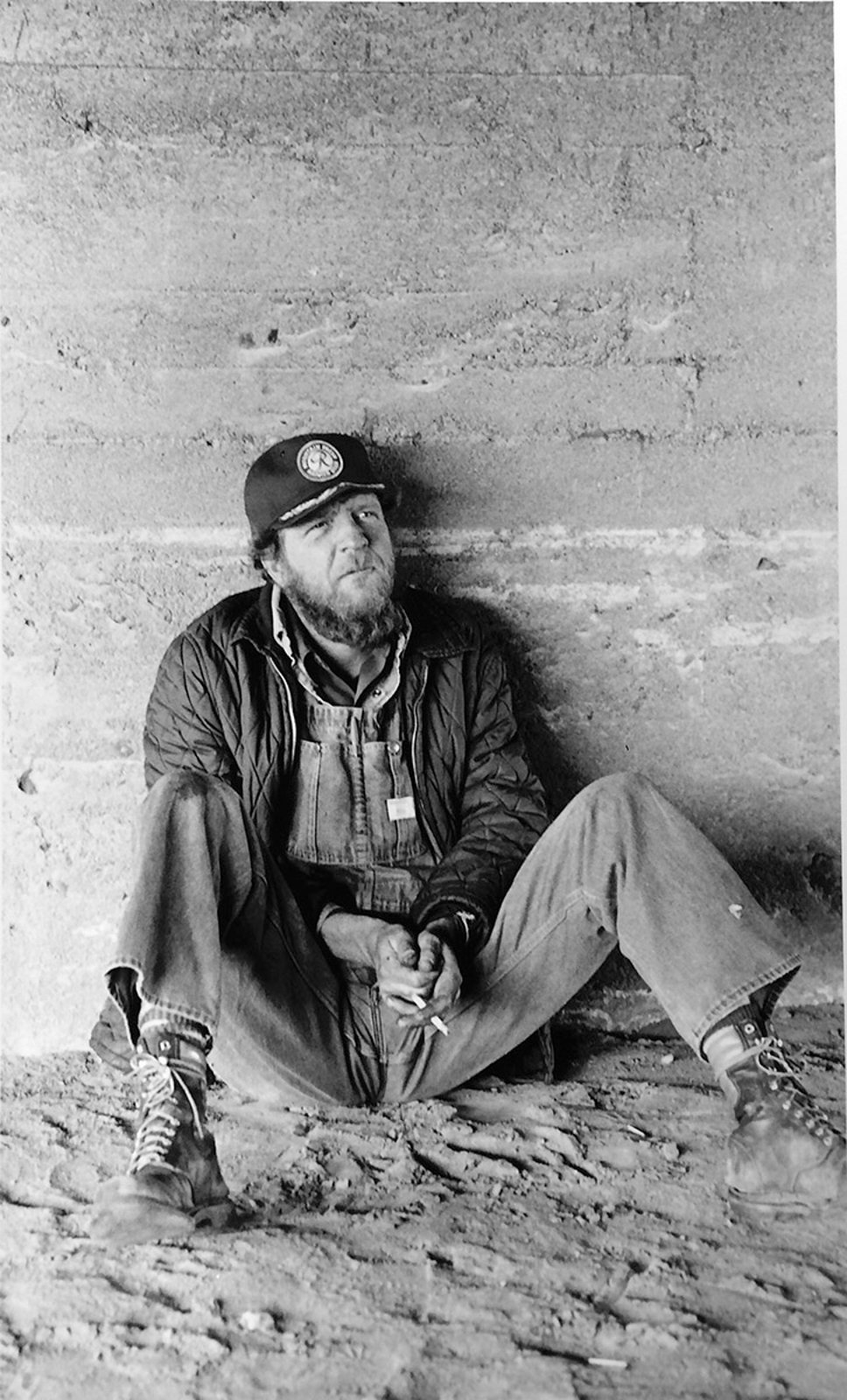Mark Kiryluk (b. 1947, pr. Kir-i-lik) grew up in Manville, NJ, and first took up photography in 1968 at a Bauhaus-affiliated school of design and architecture in Weisbaden, Germany, where his father served as a chaplain with the U.S. Air Force. He returned to the U.S. in 1969 at the height of the Vietnam War, spent a year at the Paier College School of Art & Design in New Haven, CT, and then enlisted with the Air Force rather than be drafted. Because of his experience he was assigned to Denver’s Lowry Air Force base as a “camera specialist” (ie photographer).
At Lowry, Kiryluk worked on base assignments and also for the newspaper, which prompted him to photograph downtown. He was drawn to the Larimer Street area, and made images there from the early seventies until the mid-eighties. His primary interest was focused on the area’s residents and transient population. Many of the men he portrayed (there are no women) lived on the street and are akin to people Richard Avedon photographed for his In the American West project a decade later; and like Avedon, Kiryluk approaches his subjects with an openness that invites empathy and curiosity in equal measure.
Mark Kiryluk: Man with Cart, ca. 1980
A strength of his work is that almost without exception, his subjects appear to be self-sufficient and confidant. Man with Cart (above), photographed at Larimer and Broadway in 1980, was taken with a square format Bronica camera. Kiryluk writes that he likes the format, which allows him do all his cropping while shooting and not after. “I know it restricts me but I like the challenge of composing the shot at that moment. I said hello to this gentleman and he posed briefly for me.
Man of Larimer Street, 1970 (below), is a relaxed portrait of a man in his fifties dressed in a plaid jacket and worn trilby hat, standing next to a sign in a window reading “Welcome Stockmen.” A bucking bronco advertising logo suggests the image was made in January, during the annual stockshow. Kiryluk recalls that, “This is the first photo I took in downtown Denver with a Speedgraphic 4 x 5. I only had two film holders (four frames) with me and needed to make sure of every shot counted. This man was standing in front of an old bar. I approached him and asked him to pose. Since this was my first time approaching people in this manner I was not sure of his response to my request. But there was no problem as you can see by the results.”
Mark Kiryluk: Man of Larimer Street, 1970;
Mark Kiryluk: Death on Larimer, 1970
In contrast, Death on Larimer reveals the extreme dangers faced by unhoused and transient people in the winter in Colorado. Kiryluk describes the scene at what is now Larimer Square, where “they were demolishing or tearing down all of these big, old buildings and I just happened to walk by. I was with a friend and we looked in this basement that was below ground level. We saw a doorway and a door, an old screen door. I said, ‘there’s a mannequin in there. Why would somebody put a mannequin down there?’ I went down there and it was a fellow who had frozen. He had died from hypothermia, a young man.”
His photograph of a group of adolescents under the 16th Street viaduct (Boys on Bikes under 16th Street Viaduct, 1980, top photo), prompted me to ask if he ever felt unsafe photographing in what was then a redevelopment area defined as Denver’s skid row. His response was that he used an effective ruse to gain their cooperation, if not their trust: “I wanted to photograph the viaduct itself. … They saw me with my camera and one said to me, ‘we could easily beat you up and take that camera and your gear.’ I replied immediately, ‘how about if I take your picture instead.’ One flipped me the bird and I said, ‘That’s the shot right there.’”
Following his military discharge, Kiryluk sought work as a photographer. “I went to a fellow who I know well now, Larry Sampson [who] worked at a place called Ward Photography,” he recalls. “I came in to apply and showed my portfolio to him. … He said, ‘You’re crazy. If you want to be a photographer, you’re nuts. It’s not what you want to do with your life. There are too many photographers. Everyone is a photographer.’
“So I was really desperate for work. I went into the Catholic Register and they were located down on Bannock Street at the time. … Father C.B. Woodrich, Woody they called him, said, ‘I need a photographer and you’re the man.’ So I was there for six years and had a chance to cover Pope John Paul’s arrival to Mexico City, his first trip to this hemisphere.
Mark Kiryluk: Andy Warhol at the Denver Art Museum, February 1977.
One of Kiryluk’s Catholic Register assignments to photograph Byzantine Rite Catholic priests led to his meeting Andy Warhol. “We went to this place and Paul Warhola was the priest. After the photo shoot Paul says, ‘Do you like art?’ I said, ‘Yeah, I like art. I’m a painter myself.’ He said, ‘Well, my uncle is going to be in town.’ This was February, 1977. … He said, ‘Andy will be staying at The Brown Palace, and he’s going to come with his entourage. … We’re going to meet him at the Denver Art Museum, and if you get there early, I’ll get you in.’
They arrived before the reception began, and Kiryluk asked Warhol if he could take his picture. “He said, ‘Sure.’ It was just the two of us walking around this silent hall at the Denver Art Museum. I got him in this cove. … The light was sort of perfect because it gave you almost a skeleton type of look, with the dark shadows and everything. He was great to work with.” (During that same visit, DAM photographer Lloyd Rule took a superb photo of Warhol sitting inside a Larry Bell sculpture. That image is published in my May 7, 2021 post titled Warhol in Colorado.)
After a diagnosis of MS, Kiryluk’s movements became increasingly restricted and he had to give up reportage; he turned his attention back to painting, which he continues today at his home in Denver.
The Colorado Photo History blog is the online presence for “Outside Influence,” a book project by Rupert Jenkins. As always, please leave a comment or a suggestion for future posts, and visit #Colorado Photo History on Instagram and Facebook.
#coloradophotohistory #outsideinfluence #markkiryluk #larimerstreet #skidrow #portraiture #denverportraiture @lododenver @lododistrict #lododenver



